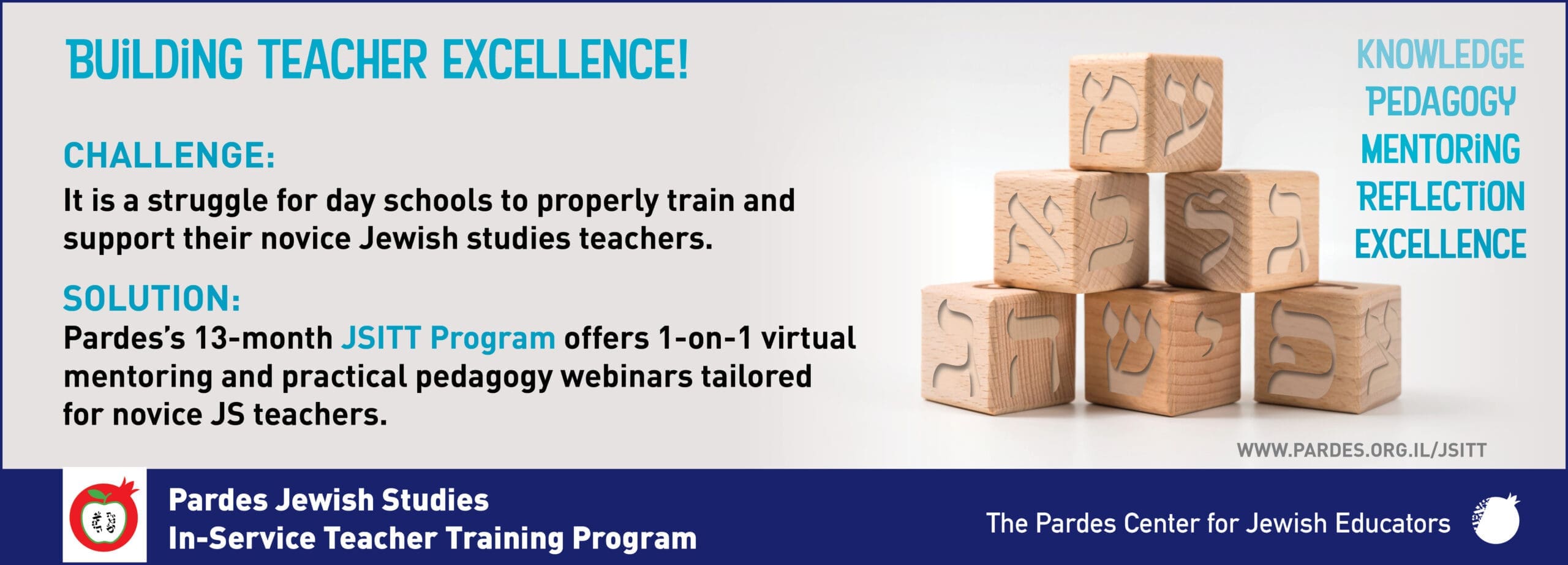A Learner-Centered Approach to Teaching Gemara

David Israel teaches Talmud at SAR Middle School (Riverdale, NY). After many years in communal service administration and day school leadership, Rabbi Israel returned full-time to the classroom. He enjoys watching students’ eyes light up when they suddenly understand a sugya. He is a graduate of Columbia University and RIETS, Yeshiva University



David Saltzman is the General Studies Principal and Director of Teaching and Learning at the Yeshivah of Flatbush Lower School. Rabbi Dr. Saltzman also coaches teachers and administrators to transition to a student-centered classroom. He has a Master’s in Education and an Ed.D in Administration and Supervision from Yeshiva University.
Traditional methods of teaching Gemara, such as hevruta learning followed by an interactive shiur, have stood the test of time. When teaching beginner students, however, this approach is less common, given their lack of prior knowledge or skills. As a result, many teachers prefer a frontal approach, perhaps projecting the daf on the SMART board and presenting the text phrase-by-phrase while students take notes between the lines of the traditional Vilna text. If hevruta time is used, it is often for the students to review material rather than for them to try to decipher the text. In this article, we are going to propose a method for using a modified version of the traditional approach which can be used for learners starting out on their Gemara learning careers.
The application of Self-Determination Theory to education evolved out of the original work of psychologists Edward Deci and Richard Ryan. Self-Determination Theory proposes that an individual’s intrinsic motivation (and consequently their performance) is determined by three factors: autonomy, competence, and relatedness. This research suggests that implementing these pillars of Self-Determination Theory into an introductory Talmud learning experience should emphasize student involvement, action, and effort in the learning process. Adding these elements will lead to increased motivation resulting in more effective learning, deeper comprehension, and longer retention.
In the methodology presented below, based on self-determination theory, students are asked to learn in hevruta and wrestle with the text prior to the teacher reviewing and “teaching” the material. During this in-class student work time, the teacher is present to assist and encourage. Since beginning students require appropriate scaffolding, an introduction to the sugya as well as a word key are provided. Over time, as students absorb vocabulary, halakhic concepts, and familiarity with the rhythm of Gemara, the scaffolding is reduced.
Why Study Talmud....
There is no question in my mind that Gemara study is an essential component of a Jewish education. The rationale behind much of lived Judaism cannot be gleaned….
Keep reading David Israel’s response and join the discussion
Destination: Where Are We Trying to Go?
Full participation in the Modern Orthodox community requires ongoing Jewish learning, often including Gemara. Almost 100% of the students at SAR will go on to a Jewish high school. The overwhelming majority will then spend a year or two learning at a yeshiva or seminary in Israel before beginning college. Ideally, this journey should be a spiral in which the students are demonstrably growing their Aramaic vocabulary, expanding their familiarity with halakhic concepts from different Tractates, and sharpening the skill set with which they analyze the shakla vetarya (give and take) and the logical flow of sugyot. The foundation for Gemara learning should be laid prior to students’ arrival in Israel for their gap year so that they can take full advantage of the immersive learning environment Israel gap-year programs offer.
Specific Learning Goals
- Knowledge of some of the most common words in Gemara.
- Application of “signpost words” which indicate a shift in the shakla vetarya (e.g., ureminhu) or identify the nature of the coming text (e.g., detanya).
- The ability to follow the shakla vetarya, dialectic argument, and logic of a Talmudic text.
- Proficiency in reading and explaining a learned sugya from a “clean” (unaltered) traditional Vilna page of text.
Methodology
Note: The examples below are from the first mishna and the attached Talmudic discussion in the third chapter of Bava Metzia.
- Students receive a brief introduction from the teacher to the topic of the sugya, after which they split into hevrutot.
- In hevruta, students work on a “hesber,” a table with 5 columns: (from right to left: row number, the purpose of the text (filled in by students: statement, support, objection, solution, question, answer), the Gemara text divided into phrases in Hebrew/Aramaic, Translation (filled in by students), and a Hebrew/Aramaic word key.
| Word Key | Student Translation (filled in by student) |
Text | Purpose(filled in by student) | # |
|---|---|---|---|---|
| Phrases of the original text in Hebrew/Aramaic | Statement, Support, objection, solution, question, answer | 1 |
Students fill in the translation utilizing the words provided in the last column; the teacher circulates and supports the students in their work.
An element of incorporating student autonomy is communicating clear and specific goals and then allowing students to work at their own pace to accomplish them. This leads to competence because students have the time and scaffolding to master the content and skills. A sense of relatedness develops from the student’s relationship to peers in the hevruta setting and their relationship to the roaming, guiding teacher.
- After completing their self-translation of the sugya (or part thereof), hevrutot check their work with a peer-hevruta or by checking Sefaria / Mercava and self-correcting any errors. This step, which allows students a choice in how they check their work and to do so initially without teacher intervention, is another example of autonomy and learner-centered education.
- Hevrutot then answer a series of “Direct Questions” encouraging them to pull out information from the text. They write in their answers and the line of the text (lines are indicated in the hesber’s right-most column) on which they found their answers. The latter step demonstrates students’ ability to retrieve details directly from the text. It pushes students to produce not just a translation of the text but to show that they actually understand the information conveyed in the phrases of the text. Extrapolating information from the text is a key reading comprehension skill. Practicing and developing this skill with appropriate progressions will make students feel competent to attack future Hebrew and Aramaic texts.
What does the individual in the Mishna do?
| (line ) |
What are the two examples of deposits mentioned in the Mishna?
| (line ) |
What happens to the deposit? (two different scenarios)
| (line ) |
- After demonstrating their understanding of the explicit meaning of the text, the hevrutot also complete the “Purpose” column in which they identify the beginning of a Statement, Support, Objection, Solution, Question, or Answer.
- At this point, the class joins together. The teacher, with the involvement of the students, reviews the text, the direct questions, and the purpose of each of the phrases on the chart.
- Upon completing several sections like this, hevrutot answer “Understanding Questions” that require students to pull together information and demonstrate their understanding of the sugya as a whole.
In addition to the “depositor,” who are the other two individuals mentioned in the Mishna?
What kind of guard is the Mishna discussing?
What two choices does this type of guard have if the item is stolen?
- The teacher and students now review and discuss the answers to the Understanding Questions and are then presented with the sugya’s Hebrew text in flowchart format. The students color the boxes as per the key below to indicate the purpose of those lines in the dialogue of the sugya.
| 1 | Gemara: why did the Mishna teach both cases of an animal and an object? it should have been able to teach just one and we could have inferred the other |
⬇️
| 2 | It was necessary to teach both because if it had taught only “animal” I would say it is only in the case of an animal that a depositor would be willing to agree to give the guard the double payment that the thief pays when he is caught because of … And if the Mishna had taught only “objects” I would say it is only in the case of objects that a depositor would be willing to agree to give the guard the double payment that the thief pays when he is caught because… Therefore it is necessary to teach about both animals and objects in our Mishna; one could not infer one from the other. |
⬇️
| 3 | Rami bar Chama objects to this logic that in the case of an object, the original owner is agreeing (at the time the object is passed to the guard) that he will give the double-payment to the guard: But we have a principle that “a person cannot sell/promise something which doesn’t yet exist in the world.” And even according to R. Meir who said “a person can sell/promise something which doesn’t yet exist in the world,” that referred to a situation like fruit of a palm tree which is assured to come, but here, who is to say (the object) will be stolen?? And if you want to say it will be stolen, who is to say the thief will be found?? And if the thief is found, who says he’ll pay – maybe he will admit the thievery and will be exempt from paying the double payment! |
⬇️
| 4 | Rava said: let’s say the case is as if he (the owner) says to him (the guard): “should it be stolen and you decide to pay me, my cow will be considered as sold to you from now (ie. the moment the object is being passed to the guard and the owner/guardian relationship begins)״ |
| Statement | Blue |
| Support | Orange |
| Objection | Red |
| Solution | Green |
| Question | Yellow |
| Answer | Purple |
- The students now begin the final step of transferring their familiarity with the text and the flow of the sugya to the traditional Vilna edition. With the aid of a video in which the teacher models a proper Sugya Recitation, the students are assessed by making a video of themselves reading and explaining the sugya from a “clean” page of the Vilna edition. The student’s Sugya Recitation is intended to replicate the student teaching the text to a person who is familiar with Gemara, but not with this particular sugya.
The Sugya Recitation is graded according to a rubric that assesses (on a scale of 1-3) the student’s pronunciation, inflection, identification of components of shakla vetarya, and understanding. Students use the rubric to self-assess and determine where to improve before they submit subsequent work.
| Satisfactory (+1) | Very Good (+2) | Excellent (+3) | ||
|---|---|---|---|---|
| Pronunciation
|
Key words pronounced correctly. | Most of the text is pronounced correctly. | Pronounced words correctly with few mistakes. | |
| Reading – Inflection
|
Read haltingly with many mistakes in the punctuation of the text (pauses, stops, questions, exclamations, etc.). | Read with several mistakes in the punctuation of the text. | Read with few mistakes in punctuation of text. | |
| Shakla V’Tarya
|
Identified some elements of Shakla V’Tarya (statement, question, answer, objection, solution, support). | Identified most components of Shakla V’Tarya of the Sugya and where they began and ended. | Identified all components of Shakla V’Tarya of the Sugya and where they began and ended. | |
| Understanding
|
Showed an understanding of the main point of the Sugya. | Showed a general understanding of why a section was an objection, why it was a solution, etc. | Clearly explained the reasoning behind all objections, solutions, etc. |
To measure the effectiveness of this teaching method, after submitting their Sugya Recitations, students completed a short 3-question quiz on the sugya. Performance on the quiz was correlated with their scores as calculated via the rubric.
Furthermore, students were asked to self-assess which tools were the most helpful to them in preparing their Sugya Recitations so that this methodology could continue to be adjusted to be most effective. Self-assessment of learning strategies also encourages the students to reflect on the strengths and weaknesses of their learning approaches. Greater awareness of their learning habits, preferences, and areas for improvement lays the foundation for autonomy as students take ownership of their learning process.
Initial data seems to indicate that this methodology is effective in developing students’ Gemara skills, deepening their understanding of sugyot, and increasing their fluency in presenting sugyot directly from the Vilna edition. Through increased autonomy throughout the learning process, opportunities to develop positive working relationships with peers and teacher, and the opportunity to experience growing competence, students’ motivation increased. This resulted in a positive learning experience and the laying of building blocks on which students can continue to grow in their learning.



David Israel teaches Talmud at SAR Middle School (Riverdale, NY). After many years in communal service administration and day school leadership, Rabbi Israel returned full-time to the classroom. He enjoys watching students’ eyes light up when they suddenly understand a sugya. He is a graduate of Columbia University and RIETS, Yeshiva University



David Saltzman is the General Studies Principal and Director of Teaching and Learning at the Yeshivah of Flatbush Lower School. He has a Master’s in Education and an Ed.D in Administration and Supervision from Yeshiva University.
Reach 10,000 Jewish educational professionals. Advertise in the upcoming issue of Jewish Educational Leadership.
Do you want to write for Jewish Educational Leadership? See the Call for Papers for the upcoming issue.


FROM THE EDITOR: Fall 2023
Fascinating. Infuriating. Uplifting. Complex. Boring. Inconsistent. Logical. Brilliant. Eclectic. Irrelevant. Compelling. Frustrating. Inspiring. Ancient. Contemporary. The Talmud evokes all the above, and more. I vividly remember my first encounter with Gemara. I must have been ten years old, and my family was in a bungalow colony in the Catskills. Rabbi Cohen taught Gemara to the older boys, of which I was not, but I asked permission to sit in and listen. I loved following the discussions and debates, even though I couldn’t read any of it and retained none of the content.


The Block Method for Teaching Gemara
By its very nature, teaching Gemara seems to defy everything we know about education. When we teach math, or language, or anything else, we start with the simple and easy-to-grasp aspects of the study area and gradually increase the level of challenge and difficulty. For example, we begin with addition and slowly move on to subtraction, multiplication, and division. We certainly don’t touch algebra until these are firmly in place. One couldn’t imagine a math class that requires knowledge of Pythagoras’ theorem presented to a class that has not yet mastered multiplication.


The Puzzling Talmud
A sixteen-year-old American Jewish day school student named Brandon (a self-chosen pseudonym) reports that he likes studying Talmud. What does he like about it? “I like the process,” he says. “It is kinda like a puzzle, that you have to get each word, and fill it in so it creates the whole text.” Brandon approaches his study of Talmud knowing that it’s going to be hard. Every word might take some effort to decode. Eventually, however, he can put it all together.
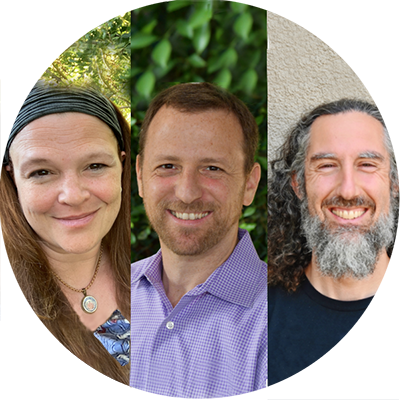

A Multidimensional Approach to Teaching Rabbinics
Pressman Academy is an early childhood through 8th grade school in Los Angeles serving a religiously diverse group of students. The school’s Judaics program, which includes Hebrew language, Jewish history, Tanakh, and daily prayer, affords a maximum of two weekly periods to teaching Rabbinics (in grades 5-8), presenting a significant challenge of what to include and how to approach it.


The Sanhedrin is in Session: Experiencing Rabbinic Literature
On Tuesday morning Rabban Gamliel called the gathered people to order. A letter had arrived from a northern district court in the Galilee which required the attention of the Sanhedrin. Rabban Gamliel took his seat at the head of the semi-circle of esteemed Rabbinic colleagues. R. Yehoshua sat on one side of him and R. Eliezer sat on the other.
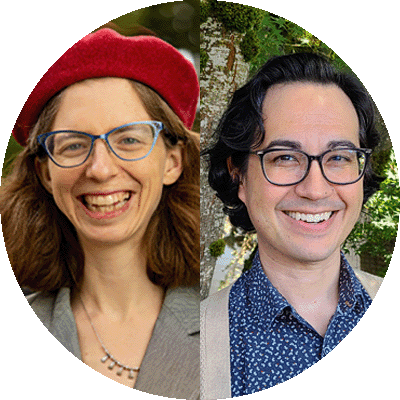

Replacing Relevance with Relationship
A relationship to Talmud study is highly valuable to those who possess it. Few other activities manage to combine elements of intellectual inquiry, spiritual questing, and moral development in the almost alchemical way that the study of Talmud does. And yet, there are a number of hurdles students must overcome in order to develop an independent relationship with the Talmud. First and foremost, studying Talmud in the original Hebrew and Aramaic can feel scary to the uninitiated. Second, the logic of the Talmud is foreign to students at first. Finally, students may wonder what a text from 1500 years ago might have to say to them.


Teaching Talmud in Secondary Schools: Masorah and Modernity
Teaching of Talmud in traditional secondary schools has been a conundrum from the day it was decided to teach Talmud as part of the standard Jewish studies curriculum. Programs for yeshiva high school graduates in Israel and around the world are consistently populated by an overwhelming percentage of students who, even after six years of multiple weekly hours of Talmud instruction in secondary schools, are helpless in the independent study of Talmud. These students are successful independent learners of advanced mathematics, natural sciences, complex technology, and even humanities, but in Talmud, they require an embarrassing degree of spoon-feeding.
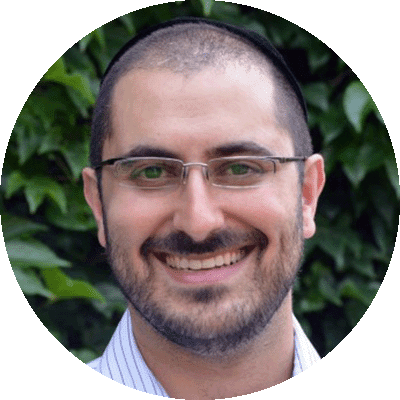

Pre-Mishnah: The Missing Link
I teach 5th grade Judaics at Fuchs Mizrachi School, a Modern Orthodox Zionist school (Cleveland). Upon entering the world of Torah SheBe’al Peh, a student is first greeted by the Mishnah—a complex and sophisticatedly interwoven compendium of Jewish law and wisdom. Students struggle to understand its relevance, how and why it was created, and its importance to the scope of their Torah learning. They ask, “Why are we learning Oral Torah?” and “Why should I care?” but underlying those questions is the more fundamental, “What is the Oral Torah?” While some choose to address this piecemeal over the span of many years, I believe that it is important to address it up front, in an organized manner.


Anatomy of a Gemara Lesson
You have been there, too, right? You thoroughly prepared a Gemara lesson by formalizing how you will explain the shakla vetarya, you concocted attention-grabbing examples and cases, charts to organize the conflicting opinions, and provided a translation and question practice worksheet. You slowly read the Gemara aloud while students annotated the text or completed linear translation sheets. You patiently and clearly explained the concepts and reasoning on a first, second, and even third pass of the reading.
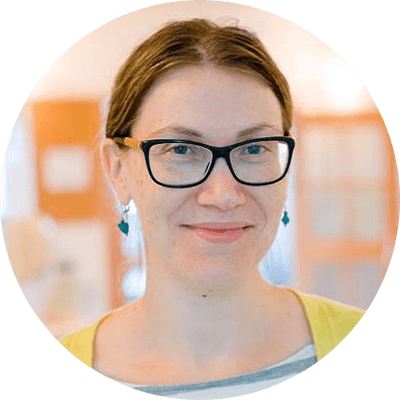

Making the Case for Agada
The rabbis of the Talmud were intentional and thoughtful educators; an example of their consummate pedagogic skill is the way they interspersed narratives into their halakhic writings and teachings. Their use of agadot is an effective teaching tool because, simply put, people love stories. We evolved to tell stories, to become compelled by stories, to connect to the characters, drama, and tension in stories. Stories draw in our students and they have the power to make them care.


Tokhehah Leshem Shamayim
One day, in a 7th grade lesson during our unit on tokhehah (the mitzvah of rebuke), a student shouted out from across the classroom: “This is tokhehah leshem shamayim!” In this moment, with one eloquent and original phrase, this 7thgrader had connected the learning in our current unit of tokhehah with the concept of leshem shamayim (for the sake of heaven) from our previous unit of mahloket (disagreement). This delighted us because it showed that the concepts of mahloket we had been teaching were not just retained for the duration of our unit, or for a test, but were concepts students internalized, held on to, and could apply to new settings and used in unique ways.
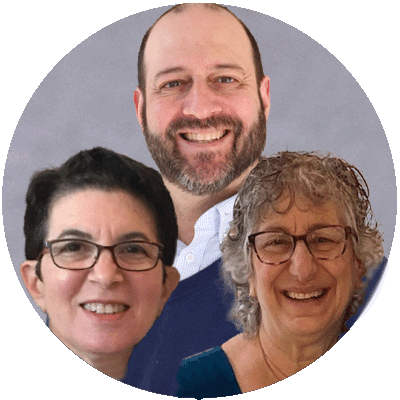

Extending the Reach of Rabbinics
Morah M.’s 5th-grade class is curating a museum exhibit showcasing artifacts that represent family legacy and tradition. The items are described on a placard that explains: These candlesticks were my Bubby’s and now my mother and I use them for Shabbat. When I chose them, I thought of the story about R. Yehuda HaNasi that we learned (Ketubot 103a). Before he died, he told his family that they should continue to set the table the same way, keeping the lamp in its usual place. We’re sort of doing the same thing when we use Bubby’s candlesticks.


Talmud Education for Diverse Learners: Taking the “Long but Short” Road
Teaching Talmud to weaker students can present many challenges not typically found in traditional Gemara classes. Navigating a text in a foreign language, especially one with the unique structure and rules of the Talmud, can be daunting for those grappling with language-based difficulties. Educators must realistically decide which teaching method—skill-based or discussion-based—will best set diverse learners up for success, and how demanding a Talmud course should be for students not likely to pursue this type of Torah learning in the future.


Teaching Talmud Guided by Essential Questions
Standing at the edge of the sea can be an awe-filled experience—the incomprehensibly vast expanse of water with no end in sight is both inspiring and intimidating. We would not consider entering it, whether to swim, sail, surf, cruise, or dive without proper preparation. Similarly, the Sea of Talmud is rich with information, personalities, debates, and much more. It, too, can inspire and intimidate with its vastness and complexity, and we should not expect our students to be able to jump in and navigate it without context and a roadmap. To prepare our students as they embark on their journey into the Oral Torah, we need to define our goals and our strategies for achieving them.
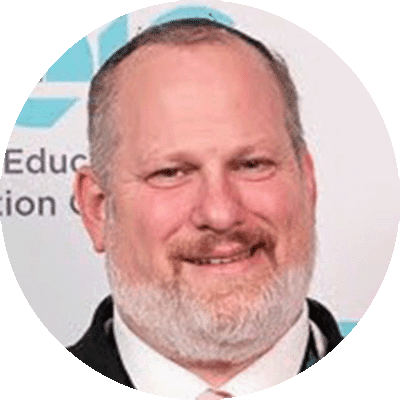

An Alternative Approach for Teaching Talmud
In my first year of teaching, I taught a student whom we will call Yossi. From the time he started 1st grade reading groups, Yossi was placed in the lowest track. This pattern persisted through my 11th grade Gemara class. A few weeks into the first semester of 11th grade, Yossi approached me after class to ask me a burning question which he was embarrassed to ask in front of his peers. He asked, “Who is Rabbi Baraita?” I said, “What do you mean?” He responded, “My past teachers kept explaining ‘the Baraita says…’ Who is Rabbi Baraita and why is he referred to as the Baraita?”


“Wait, What?!” Teaching Jewish Law in a Reform Jewish School
As a teacher at Rodeph Sholom School (RSS), I have for some time considered what it means to teach Torah SheBe’al Peh in a Reform Jewish independent school. What I offer here is a taste of how my colleagues and I have strived to shape our 7th grade Rabbinics unit so that it is aligned with our school’s mission and meets the needs of our specific community of learners. And while every school is unique, I am hopeful that the insights I’ve gained from teaching one unit on the development of Jewish law are instructive for any Jewish day school grappling with teaching Torah SheBe’al Peh.
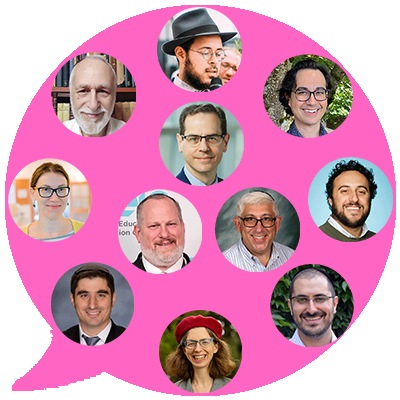

Why Learn Talmud?
Some of the articles in this issue describe the joy of studying Talmud, others break down the complex processes to make it more accessible to students or to enable the students to engage with it meaningfully. And just to make sure that we covered the bases of both the how and the why of Talmud study, we asked our authors to weigh in separately on the question: “Why do you think that day school students should be learning Gemara/Rabbinics?” We invite you to join that discussion.
Fall 2023 Journal Credits
JEWISHEDUCATIONALEADERSHIP
Jewish Educational Leadership is a publication of The Lookstein Center for Jewish Education of Bar Ilan University.
Chana German, Executive Director
JOURNAL STAFF
Hyim Brandes | Editor
Zvi Grumet | Editor-in-Chief
Chevi Rubin | Editor
Shani Sicherman | Copyeditor
Please send correspondence regarding journal content to zvi@lookstein.org.
The Lookstein Center publications present a variety of viewpoints. The views expressed or implied in this publication are not necessarily those of the Center.
EDITORIAL OFFICES AND ADVERTISING
The Lookstein Center for Jewish Education
Bar-Ilan University
Ramat Gan 5290002 Israel
Tel: +972-3-531-8199
US: +1-646-568-9737
www.lookstein.org
© 2023 by The Lookstein Center for Jewish Education.
All rights reserved.


